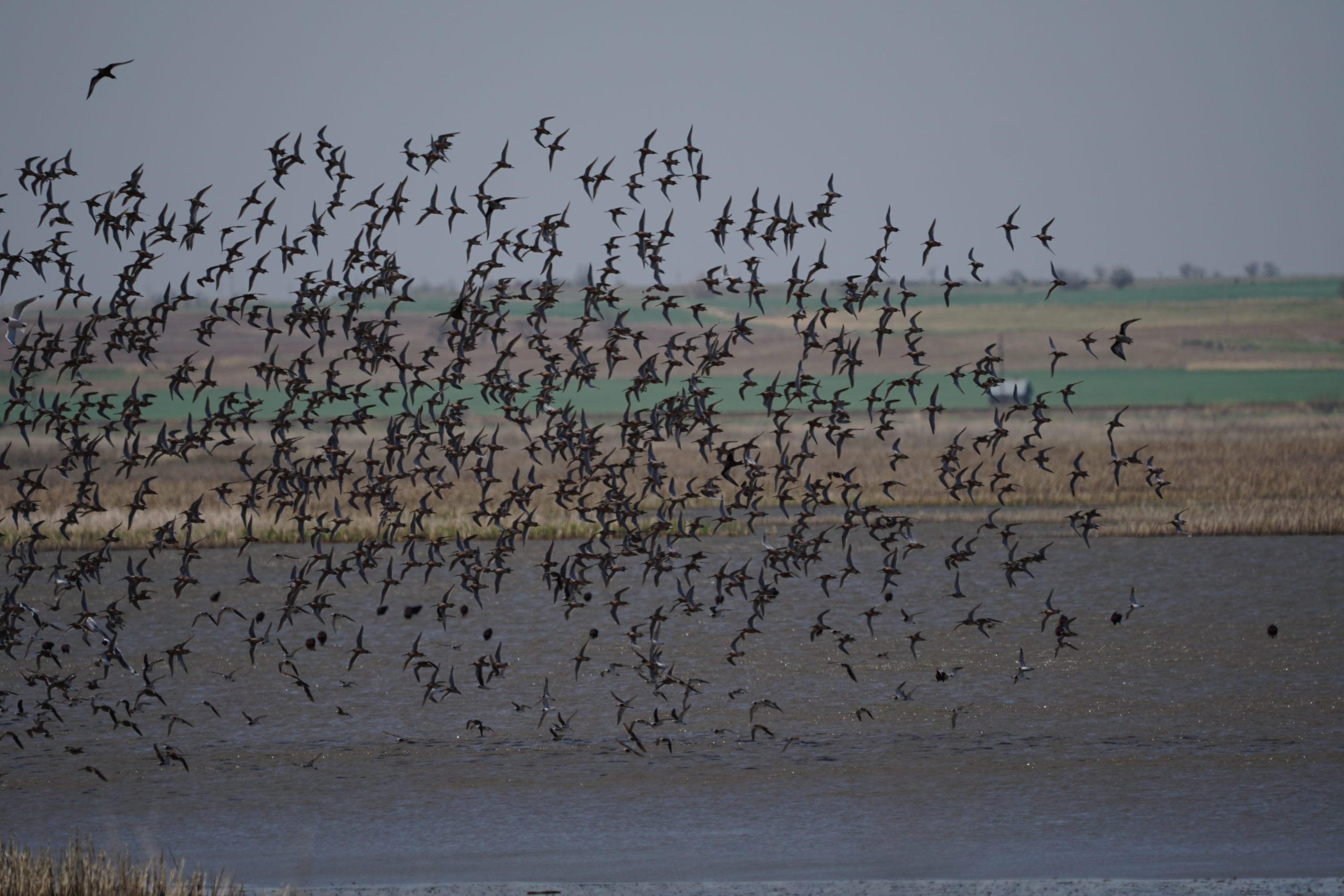When most folks think Kansas, they probably don’t immediately think shorebirds.
But at the heart of the Central Flyway, Kansas is a linchpin of migration, acting as a key stopover on both the north- and south-bound routes. When conditions are favorable, it can be a migratory bird paradise, with tens of thousands of shorebirds stopping to rest and feed across the state from the Playa Lakes in the west to the large wetland complexes in the center to the tall grass prairie in the east. But the shorebirds face a complex landscape. Migrants passing through the interior of the U.S. are affected by unpredictable weather patterns, ephemeral wetlands conditions, and less dependable food supplies. Add in threats such as invasive plants, fragmentation, energy development, and urban growth, and the need for careful monitoring becomes obvious.
The midcontinent hosts impressive population slices of about a dozen shorebird species. GPS tracks seem to show nearly the entire population of Hudsonian Godwits passing through Kansas during spring migration. Significant portions of Baird’s Sandpipers and Long-billed Dowitcher populations visit places like Cheyenne Bottoms and Quivira NWR, both WHSRN sites. And 50%of all Buff-breasted Sandpipers are hosted by the Flint Hills in the east, a tall grass prairie landscape that is part of Manomet’s Coalitions for Shorebird Conservation.






 Back to all
Back to all
 Robert Penner has been conducting ISS surveys for about 27 years in different capacities. Penner has his doctorate in ornithology, and shorebirds are his expertise. He’s been working at Cheyenne Bottoms since 1996, but in recent years he has represented The Nature Conservancy to work on issues at an international scale.
Robert Penner has been conducting ISS surveys for about 27 years in different capacities. Penner has his doctorate in ornithology, and shorebirds are his expertise. He’s been working at Cheyenne Bottoms since 1996, but in recent years he has represented The Nature Conservancy to work on issues at an international scale.